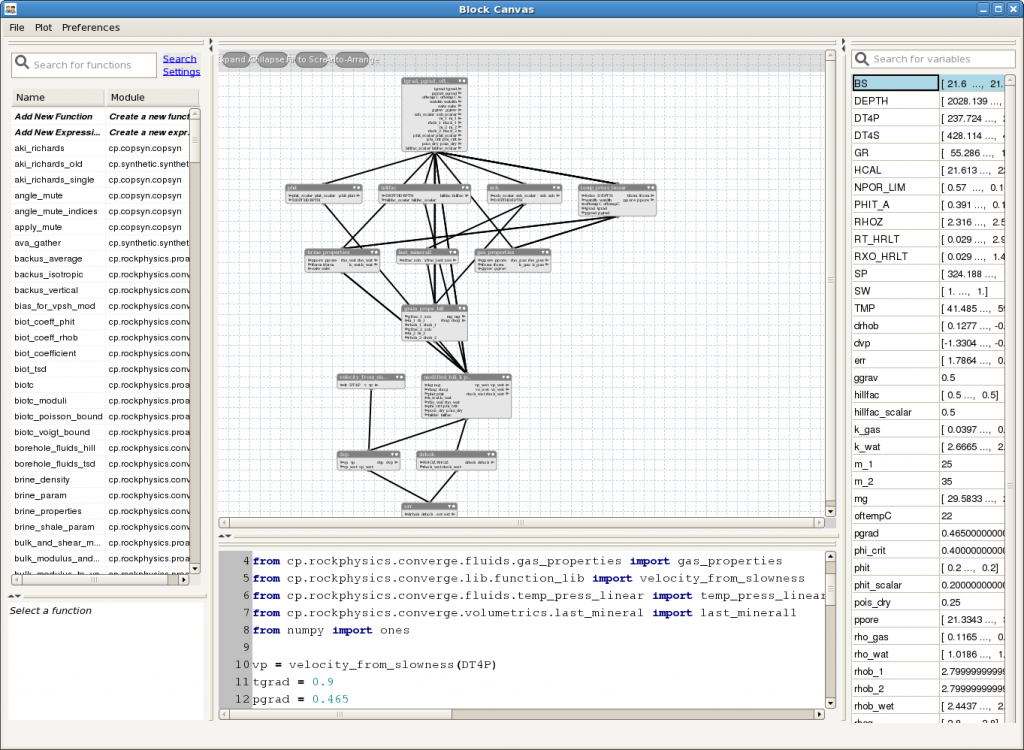CHALLENGE:
- Create a tool to construct a ‘forward logic’ model of rock physics, as opposed to the existing backward looking analysis-based approach
- Ensure the tool is available to non-programming users through a visual interface, while leaving flexibility for coding users to extend the functionality with script
SOLUTION:
- Construct a highly flexible application with a visual programming environment for developing forward models for seismic petrophysical analysis
- Expert users can define dataflows by connecting ‘chips’ that represent transformation functions, then combine them graphically without writing code
- Functionality can be extended using scripts
RESULTS:
- Developed a ‘forward logic’ model rather than the historic data-analysis-based approach
- Developed a tool with sufficient flexibility for a variety of users, and with adaptability to grow with changing understandings of rock physics
- Hot updates automatically compute new outputs from updated inputs
- Allows for graphical interaction as well as scripting capabilities for extending functionality
ConocoPhillips wanted a more flexible way to model rock physics
An important activity in characterizing reservoirs is constructing models of rock physics, which represent how properties of rocks result in observable characteristics. This model-centric approach contrasts with an analysis-based approach, which reasons backwards from observables to rock properties. The process used in the model-centric approach consists of:
- creating the ‘forward logic’ of the model
- tuning input parameter values until the output resultants reconcile with measured data, which ensures that the logic is realistic
- using the entire package of logic, parameters, and resultants to investigate new environments
ConocoPhillips sought to develop a tool that would implement this model-centric approach, and also provide:
- flexibility of construction, not imposing any particular canon of models and able to adapt to changing understanding of
rock physics - a high-level execution framework, in which users could interactively link computational models to create forward logic
- hot updates, automatically recomputing outputs when input
values change - inversion: the ability to optimize inputs based on desired
output values
A visual programing environment, enabling geoscientists to create their own predictive rock models
Enthought developed a highly flexible visual programming environment for developing forward models for seismic petrophysical analysis. Expert users can define dataflows by connecting ‘chips’ that represent transformation functions.
These functions can be combined graphically to meet the needs of the modeling problem, without writing code. However, if a novel function is needed, the user can write a script for it and turn it into a chip to use the dataflows. In this case, writing of script code is limited to small, reusable modules, rather than entire models. The visualization programming environment optimization feature provides inversion capability for tuning models.
ConocoPhillips scientists are able to create predictive models for reservoirs rather than being limited to retrospective analyses of observable characteristics.
